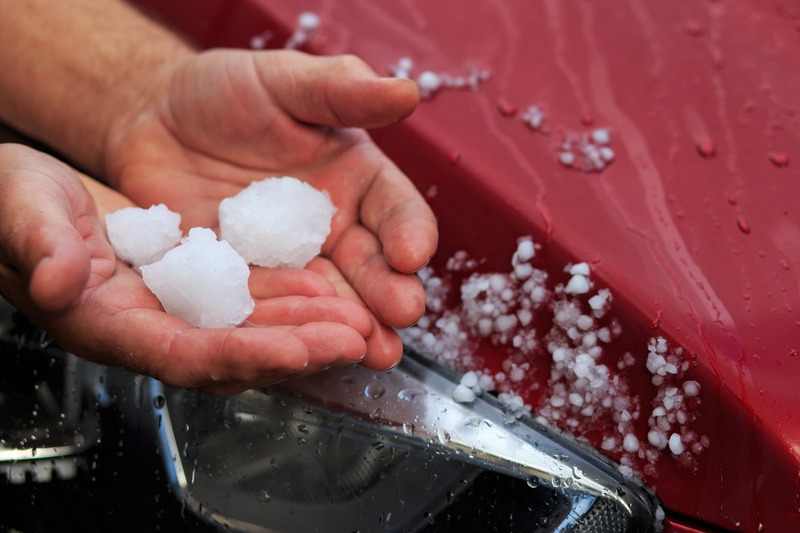What Is The Best Way to Assess Hail Damage On My Car

Dealing with hail damage on a car can be a challenging task, especially when it’s unforeseen and leaves behind visible signs of harm. Hailstorms can significantly impact the vehicle’s appearance and functionality. For car owners, knowing how to assess the damage is crucial in deciding the next steps for repairs. This guide provides a straightforward approach to inspecting and addressing hail damage effectively, along with preventive measures to protect the car in the future.
Conducting a Visual Inspection
A meticulous visual inspection is often the first step to assessing hail damage on a car. This involves taking a close look at all parts of the vehicle to identify any visible harm. Conducting this inspection in bright light or under the sun can greatly aid in spotting even minor imperfections. Here’s a simple checklist for a thorough inspection:
-
Start by examining the roof, as it’s typically most affected by hail.
-
Move on to the hood and trunk to check for any dents or indentations.
-
Look at the sides of the car, focusing on doors and fenders for subtle dents.
-
Inspect all glass surfaces for chips or cracks that may have resulted from hail impact.
Relying on Touch
Sometimes, the eyes alone might not catch all the damage. Running fingers gently over the car’s surface can reveal minor dents not easily visible. This touch inspection is particularly useful for lighter-colored vehicles where small imperfections might blend into the background.
Checking the Paint Condition
Besides physical dents, hail can also affect the car’s paint. Look for signs of paint chipping or cracking, which can develop into rust or other major issues if left untreated. Such damage might appear as bubbling or fissured areas on the surface, giving a clue to the type of repair needed.
Professional Assessment Options
For those unsure about the extent of the damage or requiring a more detailed examination, seeking professional advice is advisable. Professionals offering services such as Denver hail damage repair can assess the car thoroughly and provide expert insights on whether the damage warrants an insurance claim. They possess the necessary tools and expertise to ensure that all aspects of the damage are accounted for.
Documenting the Damage
Documentation is an essential part of the assessment process, especially when insurance claims are involved. Use a smartphone or camera to capture clear images of all affected areas from multiple angles. This photographic evidence can streamline the claims process with insurers and assist professionals in providing accurate repair estimates.
Understanding Insurance Policies
Reviewing the car insurance policy to understand the coverage for hail damage can prevent unexpected expenses. Comprehensive auto insurance usually covers such weather-related damage, but the specifics can vary. Communicating with the insurer to clarify coverage details ensures a smooth claims process.
Evaluating Repair Costs
Post-assessment, understanding the repair costs is the next step. Engaging with professionals offering collision repair Denver CO can provide a detailed estimate of potential expenses. Repair costs can vary significantly, from minor paintless dent repairs to more extensive bodywork.
Comparing Repair Methods
When considering repairs, understanding the different methods available can help in making informed choices:
-
Paintless Dent Repair (PDR): Suitable for minor dents where the paint remains intact. This method is cost-effective and quick.
-
Traditional Repair: Necessary for larger dents or when the paint is damaged. This involves more time and could require repainting affected areas.
Exploring Mobile Services
For convenience, there’s an option to explore mobile detailing services in Denver. These services can bring the repair process to one’s doorstep, allowing for assessments and minor repairs on the spot, thus saving time and effort.
Preventive Measures Against Future Hail Damage
Preventing future hail damage is equally important, and there are several steps that can help protect a car from potential hailstorms in the future.
Utilizing Covered Parking
One of the simplest preventive measures is to park the car in a sheltered area during hailstorms. Whether it’s a garage, carport, or public parking structure, having a covered location can prevent hailstones from making direct contact with the vehicle, thus avoiding damage.
Investing in Protective Car Covers
For those without access to covered parking, specialized car covers designed for hail protection offer a viable alternative. These covers are tailored to absorb the impact of hailstones, minimizing potential damage and preserving the vehicle’s condition. Choosing a reliable and well-reviewed cover to match the car’s size is crucial for optimal protection.
Ongoing Maintenance and Upkeep
Regular maintenance and check-ups play a key role in extending the longevity of the car and keeping it in excellent condition, even in hail-prone areas.
Routine Inspections
Establishing a habit of regular inspections can help catch any minor issues before they escalate into larger problems. Scheduling monthly inspections, or coupling them with regular car washes, ensures that the car remains in peak condition and that any hail-related damage is promptly addressed.
Evaluating Maintenance Packages
Some service providers offer comprehensive maintenance packages tailored for vehicles frequently exposed to weather-related damage. These packages, often including hail checks and detailed paint care, can be a convenient choice for ongoing vehicle upkeep without the burden of separate service appointments.
Closing Remarks
Assessing hail damage on a car doesn’t have to be a daunting process when approached systematically. From initial inspections to understanding repair options and insurance policies, each step is crucial in restoring the vehicle to its pristine state. Investing time in preventive measures and ongoing maintenance further fortifies the car against future weather events. By following this guide, car owners can navigate hail damage with confidence, ensuring their vehicles remain well-protected and in optimal condition.



